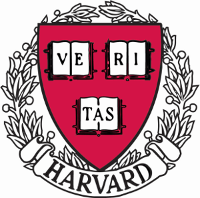
Climate Dynamics
Spring 2019
FAS course web page for EPS 231
last updated: Thursday 18th April, 2019, 08:32

Climate Dynamics
Spring 2019
FAS course web page for EPS 231
last updated: Thursday 18th April, 2019, 08:32
Announcements Last updated: Thursday 18th April, 2019.
Feel free to write or call me with any questions:
Office hours: Eli: please see FAS course web page. Please write/ call before stopping by, if
possible.
Detailed teaching notes and links to source materials, Matlab codes and more
The course covers climate dynamics and climate variability phenomena and mechanisms, and provides hands-on experience running and analyzing climate models, as well as using dynamical system theory tools. The material includes principles of climate dynamics, from feedbacks that maintain different mean climates, to phenomenology and mechanisms of climate variability on multiple time scales. Energy balance and climate equilibria, stability and bifurcations with Snowball Earth as an example. Climate variability: El Nino (roughly 4 yr period), the thermohaline circulation and its multiple equilibria and variability (decadal and longer); thermohaline variability as a possible explanation for the medieval warm period and the little ice age (hundreds of years); the Dansgaard-Oeschger warming events observed in the Greenland ice cores (every 1500 yr), Heinrich events involving massive collapses of ice during glacial times (every 7-10,000 yr), glacial-interglacial variability (100,000 yr) including ocean, atmospheric and ice dynamics, ocean carbonate chemistry and CO2. Warm climates, from the Pliocene’s (3-5 Myr) permanent El Nino to the Eocene (50 Myr) equable climate, and with lessons to possible surprises in a future warmer climate. In each case, we will discuss physical mechanisms and demonstrate them with a hierarchical modeling approach, from toy models to General Circulation Models. Needed background in nonlinear dynamics will be covered.
The course may be taken as a sequel to MIT’s Climate Physics and Chemistry (12.842) or Harvard’s introduction to climate physics (EPS 208), but can also be taken independently of these courses. Familiarity with some basic Geophysical Fluid Dynamics (the equivalent of MIT 12.800, or Harvard EPS 232) is assumed; (student who took EPS 131 or EPS 132 and are interested in taking the course are requested to contact the instructor).
Course homepage: http://www.seas.harvard.edu/climate/eli/Courses/EPS231/2019spring/
A detailed outline of the lectures, and a complete list of reference materials used in each lecture is available here. The course Supporting materials are available here. If accessing from outside campus or via the university wireless network, you will need to connect via the Harvard VPN.
Homework assignments are 50% of final grade, and a final course project will constitute the remaining 50%. There is an option to take this course as a pass/fail with approval of instructor. If interested, you need to obtain this approval during the first three weeks of the course.
Cessi, P., Pierrehumbert, R., and Tziperman, E. (2001). Lectures on enso, the thermohaline circulation, glacial cycles and climate basics. In Balmforth, N. J., editor, Conceptual Models of the Climate. Woods Hole Oceanographic Institution.
Dijkstra, H. A. (2005). Nonlinear physical oceanography: A Dynamical Systems Approach to the Large Scale Ocean Circulation and El Niņo, 2nd edition. Springer.
Gill, A. E. (1982). Atmosphere-Ocean Dynamics. Academic Press, Inc, San Diego, CA, 662pp.
Hartmann, D. (2015). Global Physical Climatology, 2nd edition. Elsevier Science.
Vallis, G. K. (2017). Atmospheric and oceanic fluid dynamics, fundamentals and large-scale circulation, 2nd edition. Cambridge University Press.